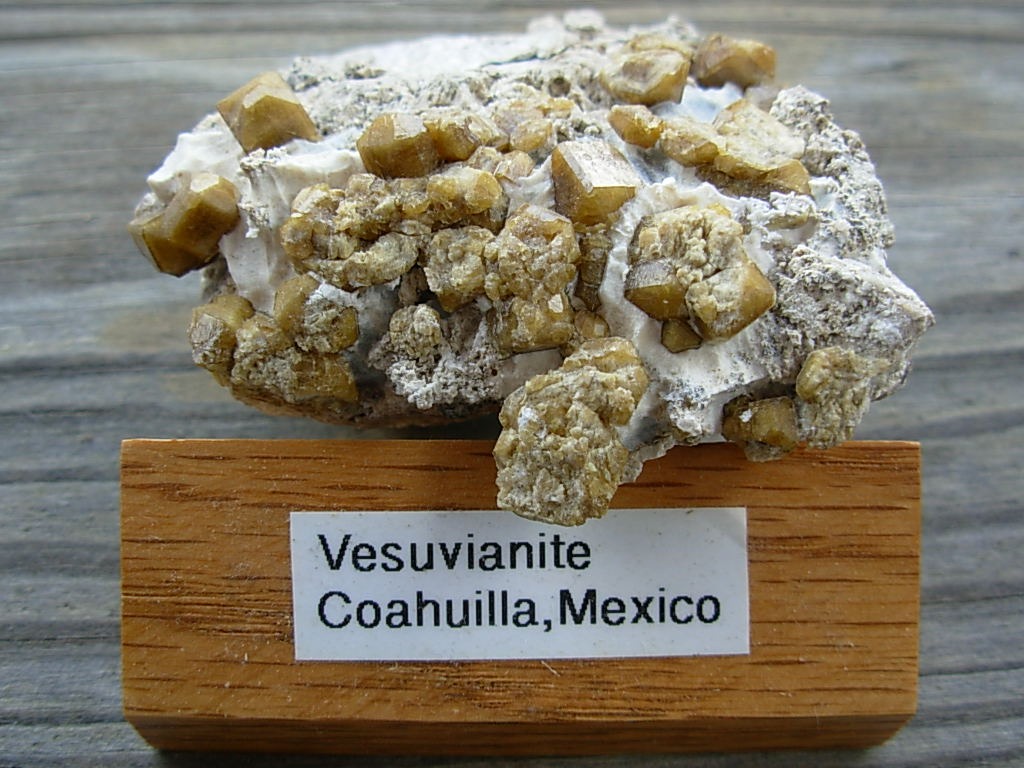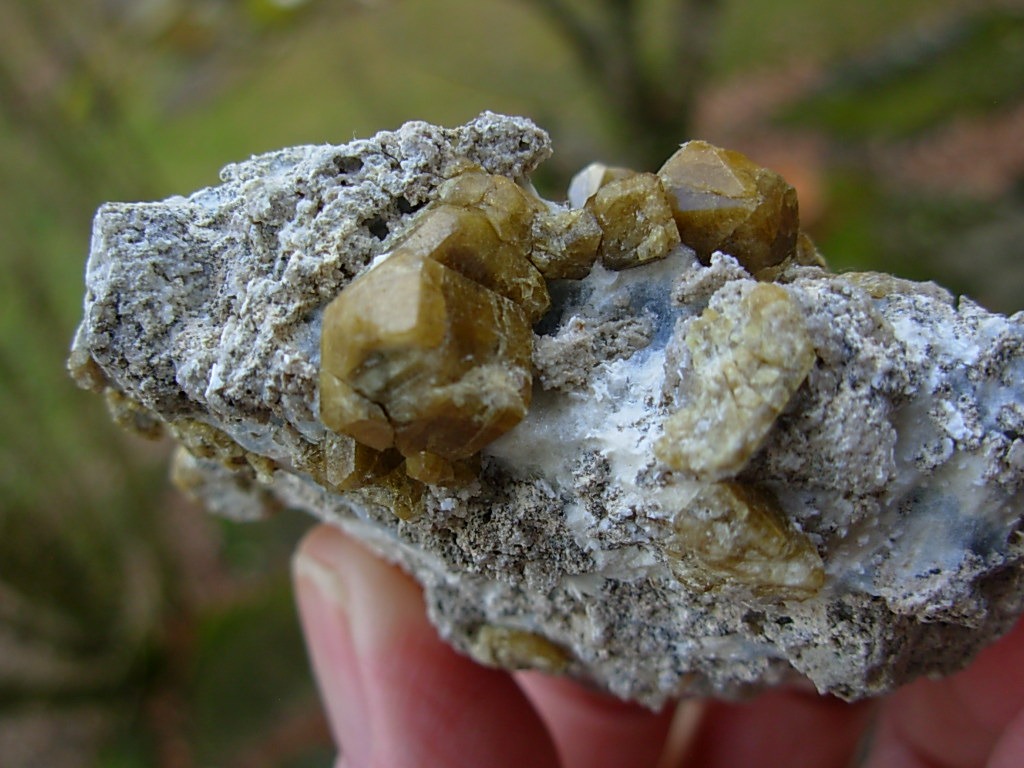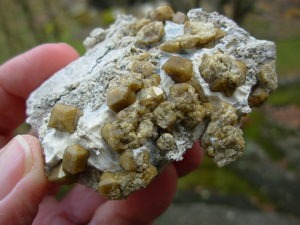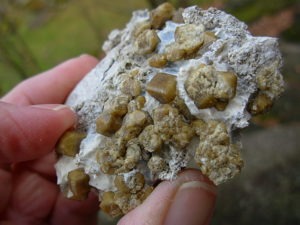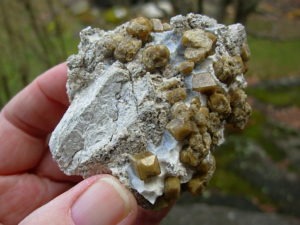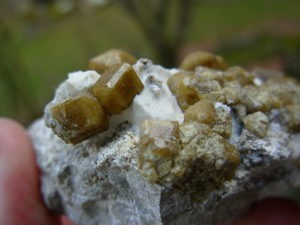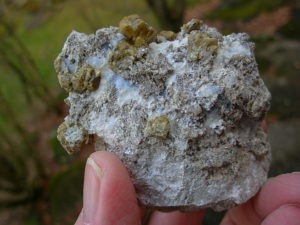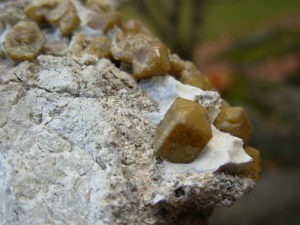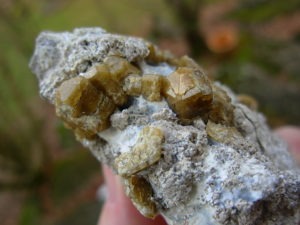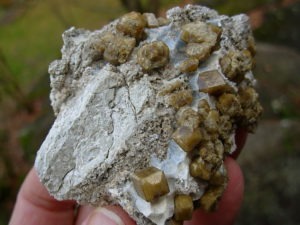Vesuvianite aka Idocrase
Vesuvianite, also known as idocrase, is a fascinating yellow, green, brown, or blue silicate mineral found originally on the volcano, Mt Vesuvius (where it got one of its names). The other name, idocrase, is from the greek and means mixed form, an allusion to its crystals showing a mixture of other mineral forms. The term Idocrase is an older synonym not commonly used anymore, it is often seen in old collection labels and classical reference guides. Although many habits of Vesuvianite are dull and uninteresting, there are some highly lustrous and brilliantly-colored forms of this mineral that are outstanding. Especially of note are the vividly-colored and multicolored varieties that came from the Jeffery Quarry in Asbestos, Quebec, which are stunning and classic forms of this mineral. Oddly enough, some of its structure is similar to that of a grossularite garnet.
Vesuvianite forms as a result of contact metamorphism on impure limestones and is usually found with other exotic minerals. A massive green gem variety is called californite from where it is found. It is a somewhat rare and beautiful mineral that can rival many other minerals for interest among mineral collectors.
Ref. https://www.minerals.net/mineral/vesuvianite.aspx , https://en.wikipedia.org/wiki/Vesuvianite
Item # 1VESM01173831
Yellow Brown Vesuvianite Crystals on Matrix from Mexico

Here's an excellent multi crystal formation of Yellow-brown Vesuvianite Crystals on a limestone oxide matrix from Sierra de la Cruz, Coahuilla, Mexico. This specimen was procured in 2005 from a Mexican rock and mineral dealer in Quartzite, Arizona.
specimen weighs 4.98 oz or 0.31 lbs (141g) and measures 2.9 x 2.4 x 1.3 inches (7.5 x 6.3 x 3.3cm)

